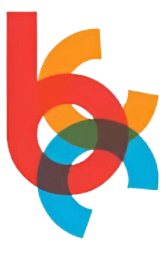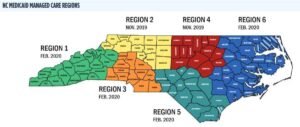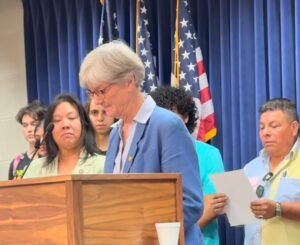Durham, NC — Nearly 100 middle school girls from Durham gathered on Friday at Durham Technical Community College for the American Heart Association’s Triangle STEM Goes Red event, an initiative aimed at introducing young women to careers in science, technology, engineering, and mathematics (STEM). The event is part of a national program designed to address gender disparities in STEM fields, where women currently hold less than 25% of roles, according to data from the American Heart Association (AHA).
Throughout the day, students engaged in hands-on activities such as robotics, coding, and product creation, including making hand sanitizer—a skill linked to both chemistry and health sciences. By participating in these activities, attendees explored fields that traditionally see lower female representation and learned how STEM can play a crucial role in various industries, including healthcare.
Seventh-grader Kasey Adams shared her thoughts on the experience. “Anything that’s produced is usually referred to as the work of men,” she said. “But other women who are interested in this area should feel encouraged themselves.” Adams’ perspective highlights a common barrier in STEM: societal expectations around gender roles.
Research supports that early exposure to STEM can help girls overcome these barriers. A study from the National Girls Collaborative Project notes that middle school is a pivotal time for building interest in STEM, as students begin to form opinions on potential career paths.
Debra Lowder, Executive Director of the Triangle American Heart Association, explained that increasing female participation in STEM could have broader impacts, particularly in healthcare. “There is a disparity in the number of women in medical research. Studies haven’t always focused on women, which means some differences in risk factors may go unnoticed,” Lowder stated. For example, women historically have been underrepresented in clinical trials, which has influenced how certain health conditions, such as cardiovascular disease, are understood and treated.
The event also served as an opportunity for students to network with female professionals in STEM, offering mentorship and demonstrating successful career paths in fields like biomedical engineering, data science, and environmental science. Studies indicate that mentorship and role models are key to sustaining girls’ interest in STEM over time.
As the AHA and local leaders look to expand access to STEM for young women, the Triangle STEM Goes Red event represents a step toward bridging the gender gap in these high-demand fields. The hope is that with initiatives like this, more young women will pursue careers that not only innovate but also address critical needs in society, from healthcare to technology.













